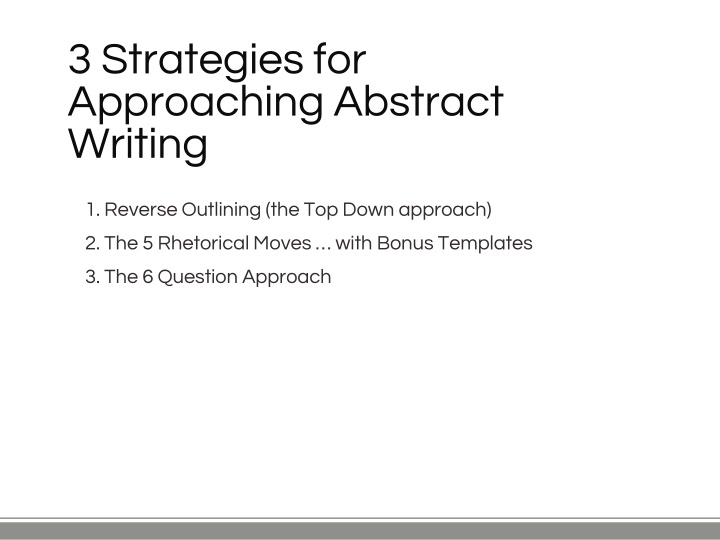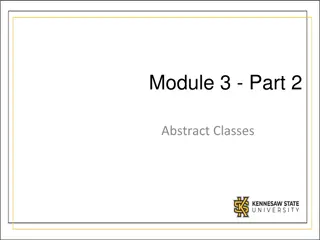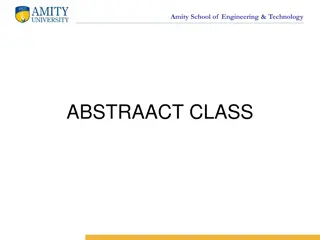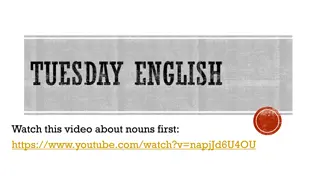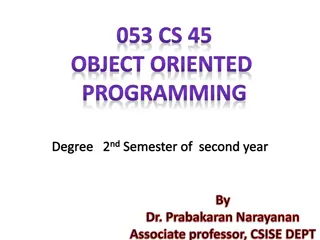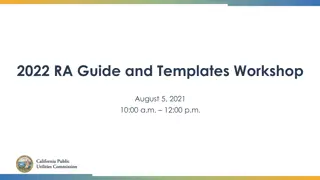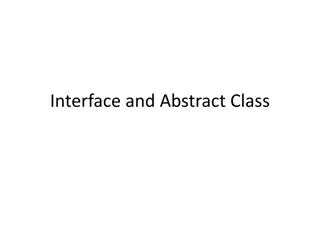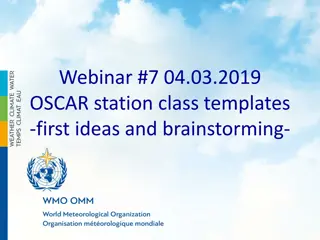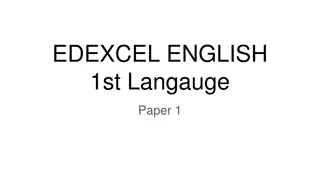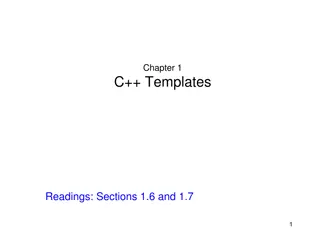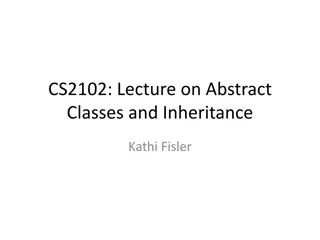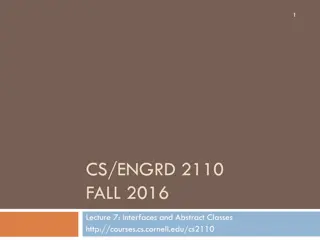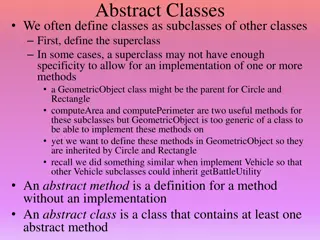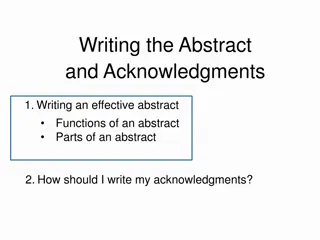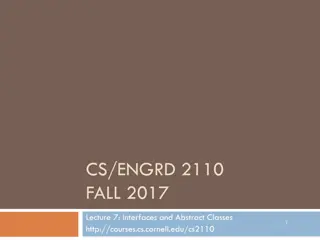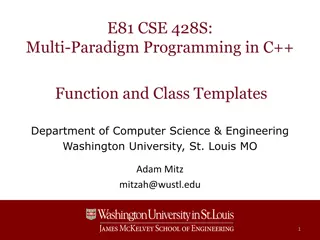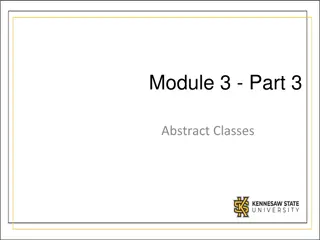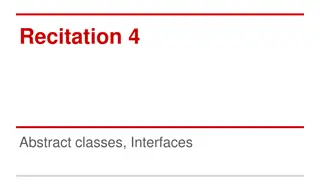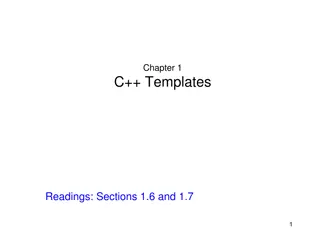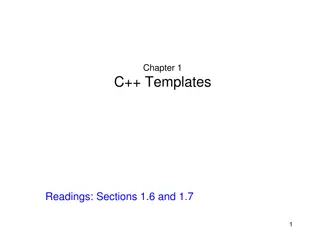Approaching Abstract Writing: Strategies & Templates
Learn effective strategies like reverse outlining and the 5 rhetorical moves to craft a concise abstract quickly. Utilize bonus templates for each step presented in a clear, actionable format. Simplify the abstract-writing process and ensure alignment with your main text effortlessly.
Download Presentation

Please find below an Image/Link to download the presentation.
The content on the website is provided AS IS for your information and personal use only. It may not be sold, licensed, or shared on other websites without obtaining consent from the author.If you encounter any issues during the download, it is possible that the publisher has removed the file from their server.
You are allowed to download the files provided on this website for personal or commercial use, subject to the condition that they are used lawfully. All files are the property of their respective owners.
The content on the website is provided AS IS for your information and personal use only. It may not be sold, licensed, or shared on other websites without obtaining consent from the author.
E N D
Presentation Transcript
3 Strategies for Approaching Abstract Writing 1. Reverse Outlining (the Top Down approach) 2. The 5 Rhetorical Moves with Bonus Templates 3. The 6 Question Approach
Abstracts function precisely as wallet size photos did: Whatever is portrayed in the big image of your manuscript appears in the smaller image if you already have developed the main text, it s easy to generate the miniature Pat Goodson
Approach 1: A Reverse Outline Abstract in 20 minutes First 10 minutes 1. Consult your paper 2. Format your abstract to mirror the same structure of your manuscript (e.g., introduction, purpose, methods, results, conclusion) 3. In your paper, highlight each paragraph s key sentence
Approach 1: A Reverse Outline Abstract in 20 minutes Second 10 minutes 1. Select several 1-2 key sentences from each section. 2. Copy and paste them into the appropriate sections of your abstract 3. Revise for flow, connections, and removal of redundancies 4. Edit for word count and other restrictions Note: the goal is not having to rewrite. Your abstract will be consistent with your paper.
A good abstract is like writing a haiku. It is very tightly constrained and you have to accomplish a lot in a very small amount a space. Simplicity is a key watchword. Mark Pedretti
Approach 2: The Rhetorical approach (with templates!) Rhetorical Moves Examples Move 1) Introduces the situation or problem. The argument of the centrality of your topic. It can be a question. _____ is fundamental to _____ _____ is of interest because ____ Central to the discipline of _____ is _____ Why have we not yet solved the problem of ____? This research investigates ______ We analyzed ______ This study investigated the usefulness of ____ on ______ This paper assesses the significance of _____ Move 2) Explain the purpose of the research
Approach 2: The Rhetorical approach (with templates!) Rhetorical Function Examples Move 3) Describes the methods, material & procedures We used a mixed methodological approach to _____ This study used a qualitative case study approach to investigate _____ Data was collected by _______ Move 4) Present the findings, usually 1-2 key takeaways We found ________ The data indicated that _____ The results suggest that ____ Overall, these results show that ____
Approach 2: The Rhetorical approach (with templates!) Rhetorical Function Examples Move 5) Discuss implications. This is the so what? of your research. These results have implications for ____ The theoretical implication of these findings is that ____ These findings lead to significant policy recommendations including _____ Taken together these results suggest that ______ Future work should consider ______
Approach 3: 6 Questions 6 Sentences = 1 Abstract The BIG rule: You have to answer each question with 1 sentence.
The 6 Questions! Question 1: What s the topic? Question 2: What is the problem that you tackled in this paper? Question 3: Why has no one else adequately answered this question yet? Question 4: How did you tackle this research question? Question 5: How did you go about doing the research that follows from your big idea? Question 6: What s the key impact of your research? (i.e., What does it all mean? Why should people care?)
The 6 Questions! with Dr. Seuss inspired Examples* Question 1: What s the topic? (1) In widgetology, it s long been understood that you have to glomp the widgets before you can squiffle them. Question 2: What is the problem that you tackled in this paper? (2) But there is still no known general method to determine when they ve been sufficiently glomped. * Thank you to Steve Easterbook
The 6 Questions! Question 3: Why has no one else adequately answered this question yet? (3) The literature describes several specialist techniques that measure how wizzled or how whomped the widgets have become during glomping, but all of these involve slowing down the glomping, and thus risking a fracturing of the widgets. Question 4: How did you tackle this research question? (4) In this thesis, we introduce a new glomping technique, which we call googa-glomping, that allows direct measurement of whifflization, a superior metric for assessing squiffle-readiness.
The 6 Questions! Question 5: How did you go about doing the research that follows from your big idea? (5) We describe a series of experiments on each of the five major types of widget, and show that in each case, googa-glomping runs faster than competing techniques, and produces glomped widgets that are perfect for squiffling. Question 6: What s the key impact of your research? (6) We expect this new approach to dramatically reduce the cost of squiffled widgets without any loss of quality, and hence make mass production viable.
(1) The first sentence of an abstract should clearly introduce the topic of the paper so that readers can relate it to other work they are familiar with. (2) However, an analysis of abstracts across a range of fields show that few follow this advice, nor do they take the opportunity to summarize previous work in their second sentence. (3) A central issue is the lack of structure in standard advice on abstract writing, so most authors don t realize the third sentence should point out the deficiencies of this existing research. (4) To solve this problem, we describe a technique that structures the entire abstract around a set of six sentences, each of which has a specific role, so that by the end of the first four sentences you have introduced the idea fully. (5) This structure then allows you to use the fifth sentence to elaborate a little on the research, explain how it works, and talk about the various ways that you have applied it, for example to teach generations of new graduate students how to write clearly. (6) This technique is helpful because it clarifies your thinking and leads to a final sentence that summarizes why your research matters. 1. The Topic 2. The Problem being solved 3. Why Previous Research has not yet solved it 4. How you tackled the problem 5. How you did the research itself 6. Why we care
How long is an abstract? 150-300 words Depends on the journal or university requirement
What tense do I write an abstract? There is no one rule but tenses usually switch within Most commonly: Present Present or Present Perfect statements (e.g., Writing has been an important aspect of school curriculum) Past tense Past tense for methods and results. Present tense Present tense for conclusions. Present Perfect tense for opening
Can I use first person in the abstract? Yes. Often will be in the forms of: We observed We discuss We conclude From a writing point of view: Do it! Adds pace, makes abstracts shorter Important Caveat: Depends on the discipline/source
How do I seek useful feedback on my abstract? 3 KEY Questions 1. Do you understand what my research is about? 2. Do you understand why my research is important? 3. Does my abstract make you want to keep reading?
